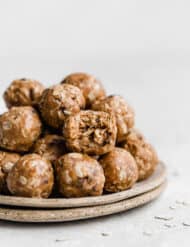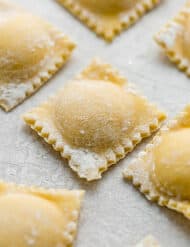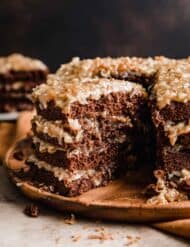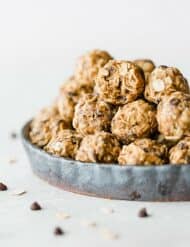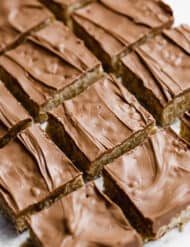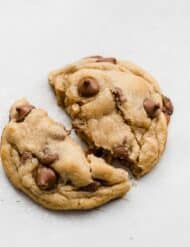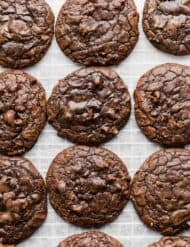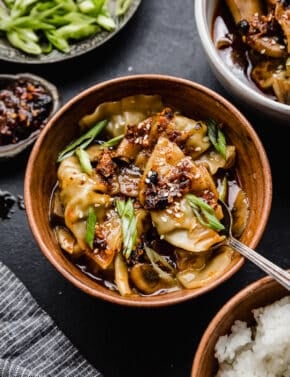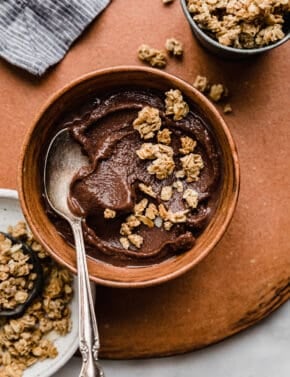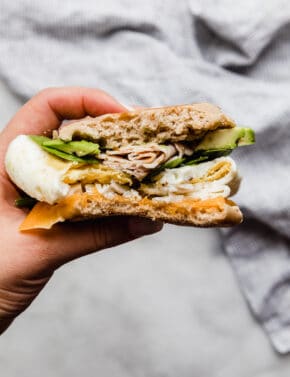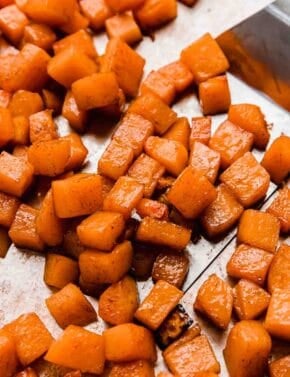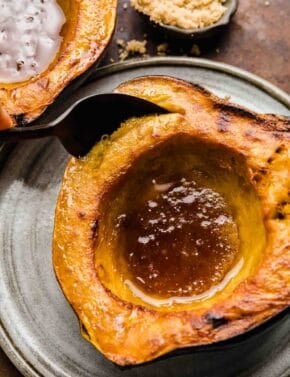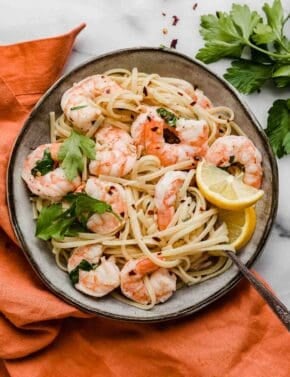Japanese Fluffy Pancakes
These Japanese Fluffy Pancakes are thick, soft, and billowy. Their soft texture on the inside and a golden brown color on the top and bottom makes for a beautiful and delicious pancake breakfast!
Although these pancakes are Japanese, you can eat them the same way you would traditional pancakes. Top them with fresh fruit, syrup, whipped cream, powdered sugar, chocolate chips, or other favorite pancake toppings!
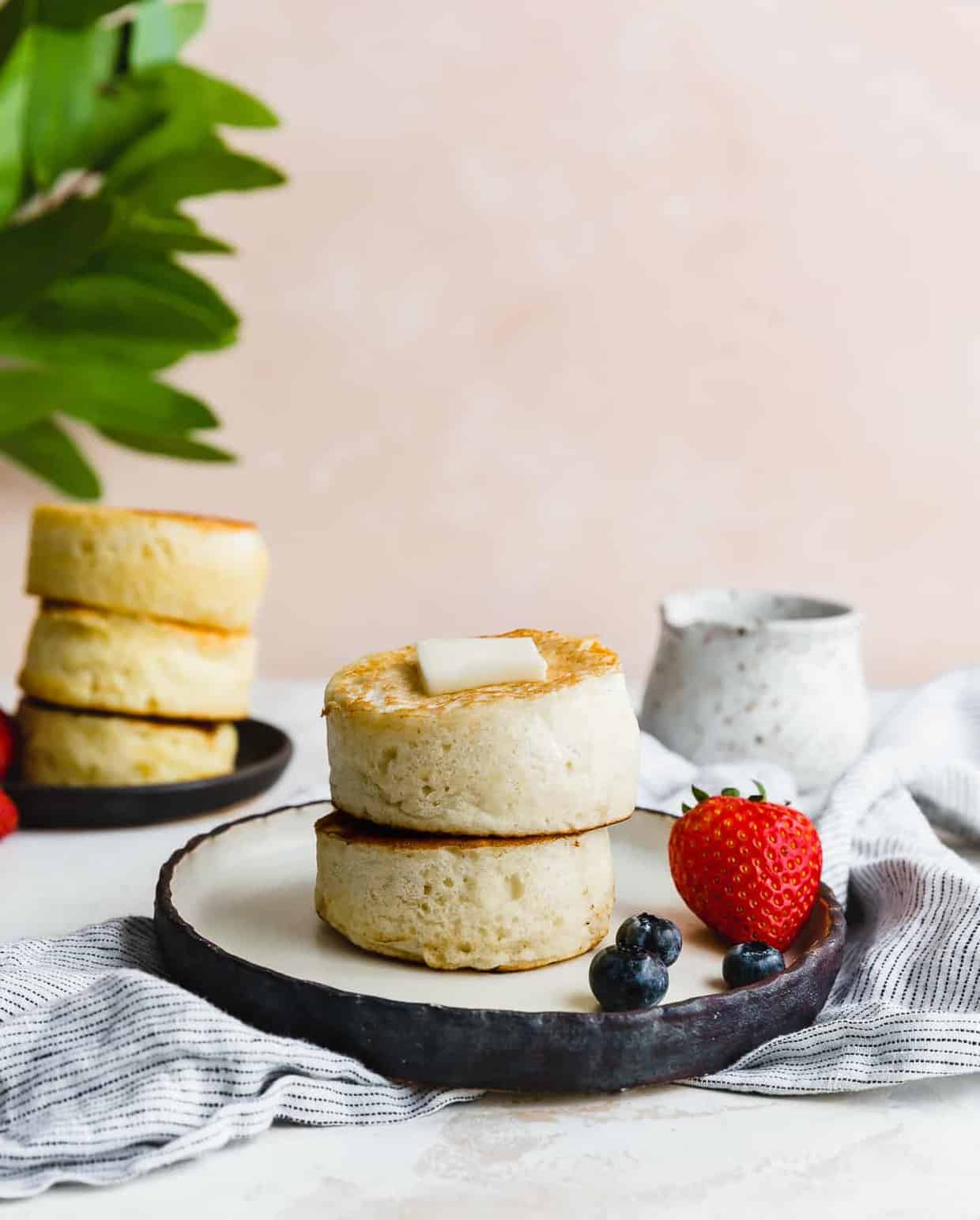
Why This Recipe Works
- We put the fluffy in Japanese fluffy pancakes. These soufflé pancakes can be a tad tricky to get a good fluffy rise on them. Thanks to a few perfectly beaten egg whites, we can get the fluffiest pancakes!
- Step-by-step instructions and tips to help. I knew I wanted to get a Japanese fluffy pancakes recipe (Or スフレパンケーキ, if you’re looking for the name in Japanese!) that would give detailed instructions and helpful troubleshooting, especially when they taste as amazing as they do! No matter your skill in the kitchen, no one should feel like a type of food is out of reach!
Ingredient Notes
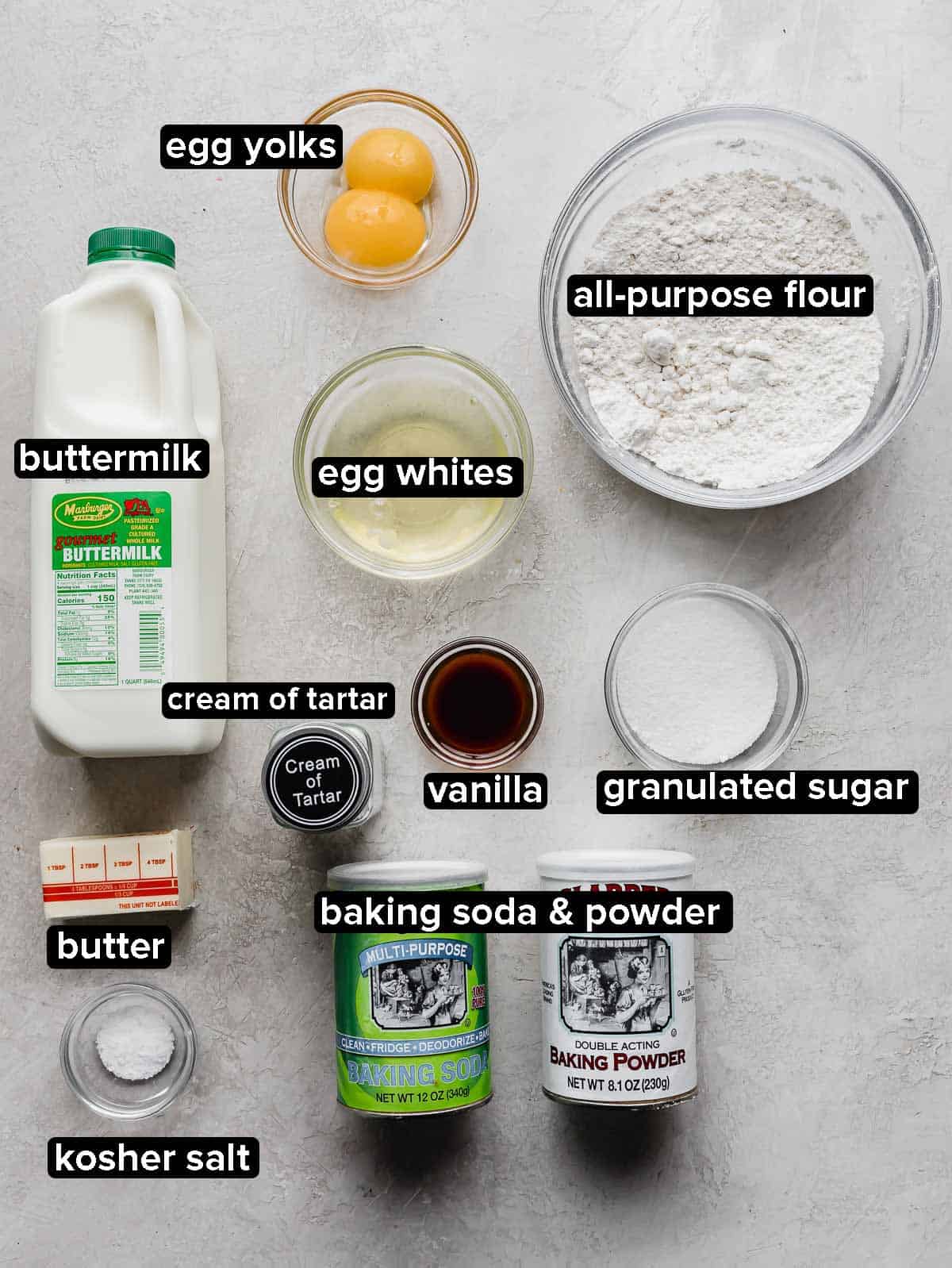
- Flour: Use regular, all-purpose flour in this Japanese pancake recipe.
- Granulated Sugar: We don’t use too much sugar, but enough to sweeten the fluffy Japanese soufflé pancakes.
- Baking Powder and Baking Soda: Baking powder and baking soda along with stiff egg whites will give rise and lift to the pancakes.
- Kosher Salt: Kosher salt is a coarser texture than table salt. Use 1/4 teaspoon less of table salt per teaspoon of kosher salt.
- Buttermilk: Use room temperature buttermilk for best results. Some of the key flavor comes from the buttermilk flavor.
- Egg Whites: Separate the eggs into yolks and whites. The egg yolks will be mixed with the remaining wet ingredients, while the egg whites will be beaten into stiff peaks to create an ultra fluffy batter.
- Cream of Tartar: Adding cream of tartar to the egg whites will help stabilize the bubbles that form, keeping the proteins in the egg whites from sticking. This will provide a smooth texture in the egg whites.
- 3-inch x 2.5-inch Ring Molds: See my note in the FAQs on what to do if you don’t have these metal molds.
Step-by-Step Instructions
- Combine dry ingredients. Whisk 1 1/2 cups all-purpose flour, 3 T granulated sugar, 2 tsp baking powder, 1/4 tsp baking soda and 3/4 tsp kosher salt. Set aside.
- Whisk the wet ingredients. In a medium bowl, whisk 1 1/4 cups buttermilk, 4 T of butter (melted), 1 tsp vanilla extract, and 2 egg yolks. Whisk until combined. Set aside.
- Whip egg whites. In a separate medium bowl, beat the 2 egg whites and 1/4 tsp cream of tartar on medium-high speed until stiff peaks form. (See Recipe Tips for more details.)
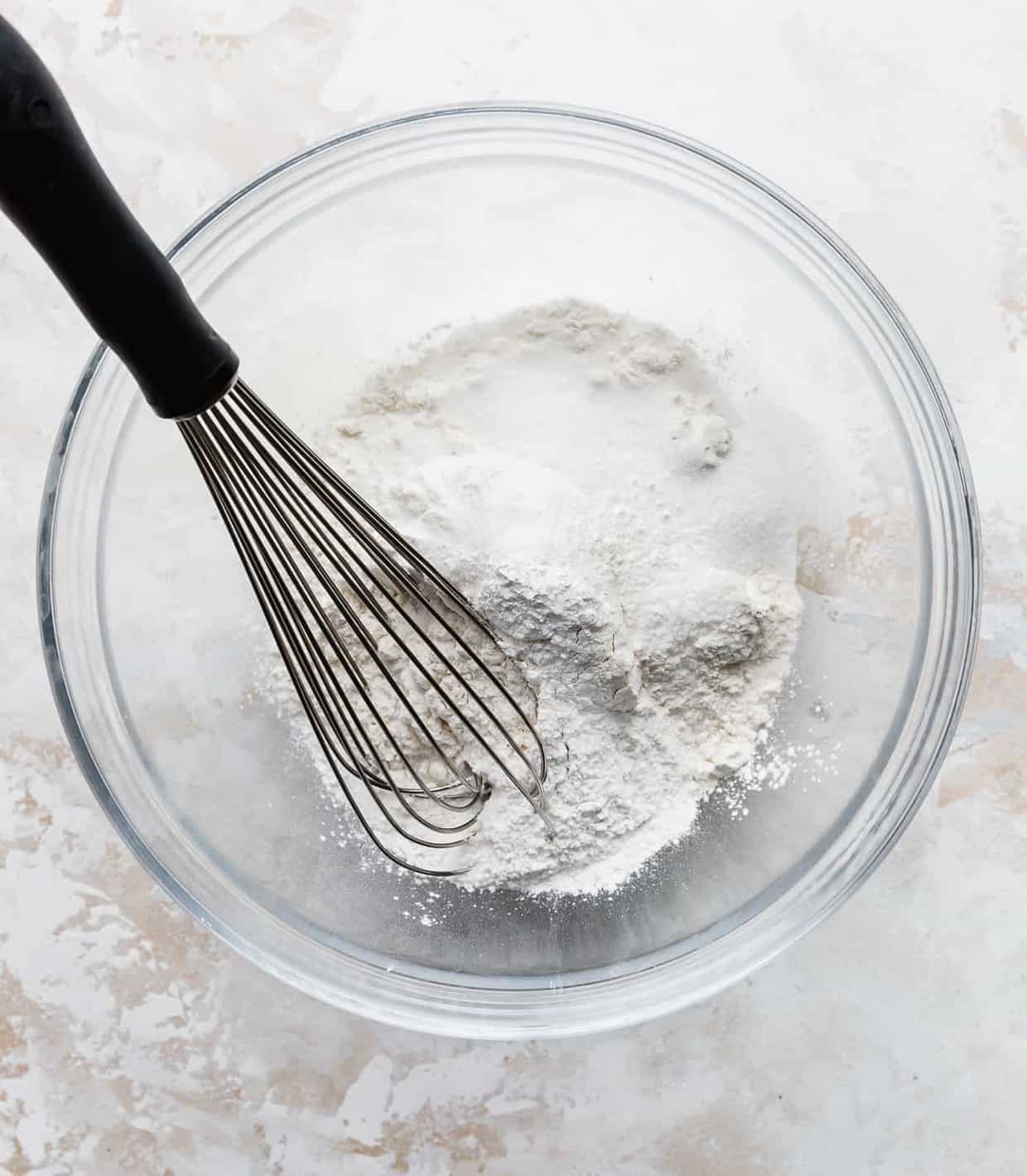
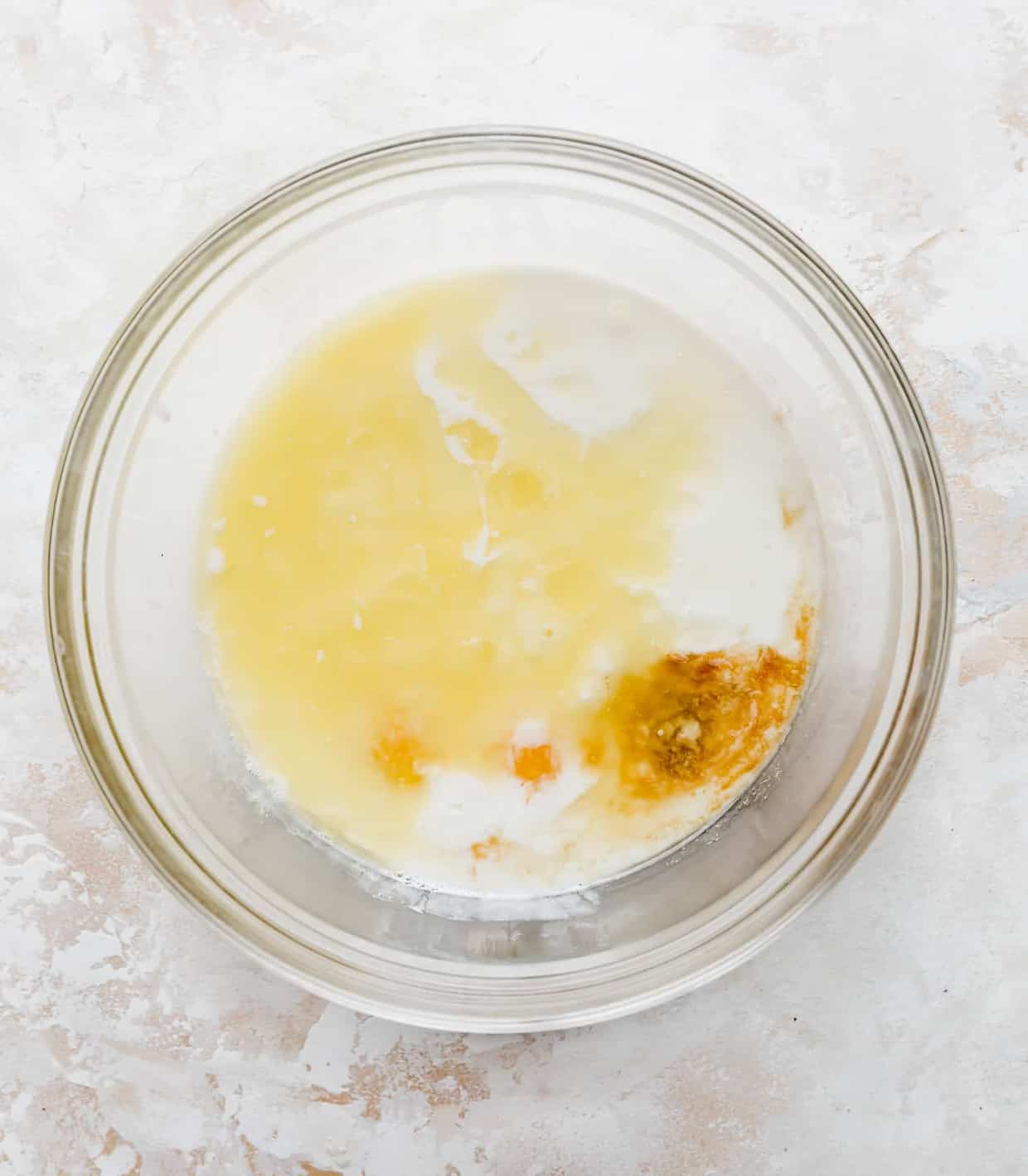
- Combine wet and dry ingredients. Using a rubber spatula, stir the buttermilk mixture into the flour mixture until partially combined.
- Stir in the stiff egg whites. Then, stir the whipped egg whites into the batter until combined. Do not to over mix.
- Prep molds and fill. Heat a large nonstick skillet over medium-low heat. Spray the pan (or cooking surface) with nonstick spray. Spray the inside of a3-inch-by-2.5-inch ring mold generously with nonstick cooking spray. Place the ring mold in the middle of the pan and spoon-fill each mold with scant ½ cup of batter. DO NOT OVERFILL. The batter should fill the mold halfway up.
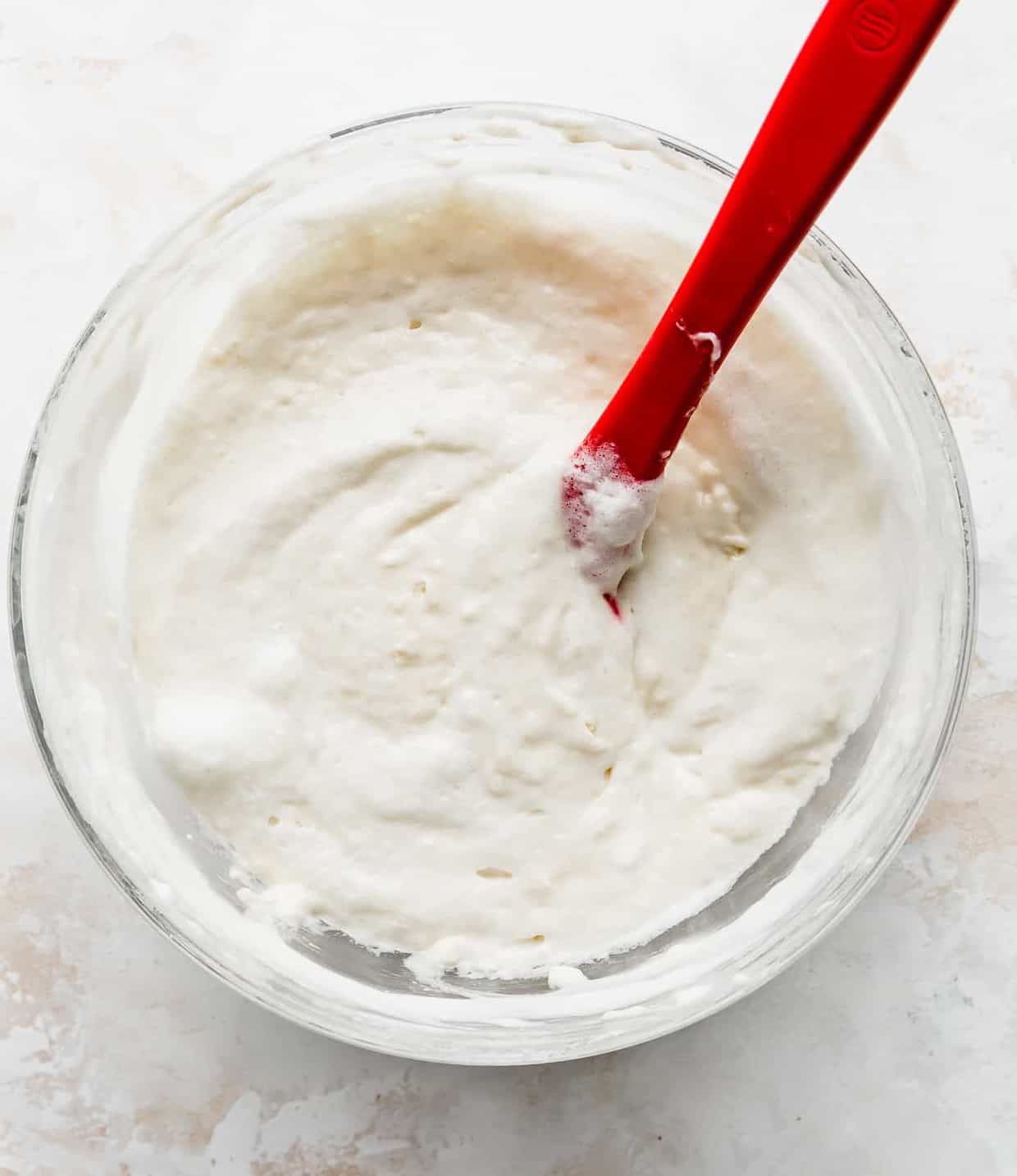
- Cook pancakes. Cover the skillet with a lid (if it has a lid) and cook until the batter rises to the top of the mold and the bottom of the pancake is golden, about 5-8 minutes. Bubbles will have formed on the top of each pancake at this point and the center will just barely jiggle. Don’t flip too soon or any uncooked batter will ooze out.
- Flip the pancakes. Carefully release the bottom of the pancake by using a spatula and sliding it under the pancake. Gently grasp the sides of the molds with kitchen tongs then carefully flip. (If cooking 1 at a time, you can rest the pancake on the spatula and bring the skillet up to the pancake and turn the pancake onto the skillet. NOTE: I have a short video of how to do this.) Cover and cook the other side for another 3-5 minutes.
- Release the pancakes. Transfer to a plate and remove the mold by running a butter knife around the inside of each mold, then carefully remove the mold. Wipe down each mold and spray with cooking spray before make another Japanese pancake. Repeat the process with the rest of the batter.
- Serve! Serve warm with a sprinkling of powdered sugar and fruit, or butter and maple syrup. Pancakes can deflate with time so eat within 30 minutes of cooking them. Enjoy!
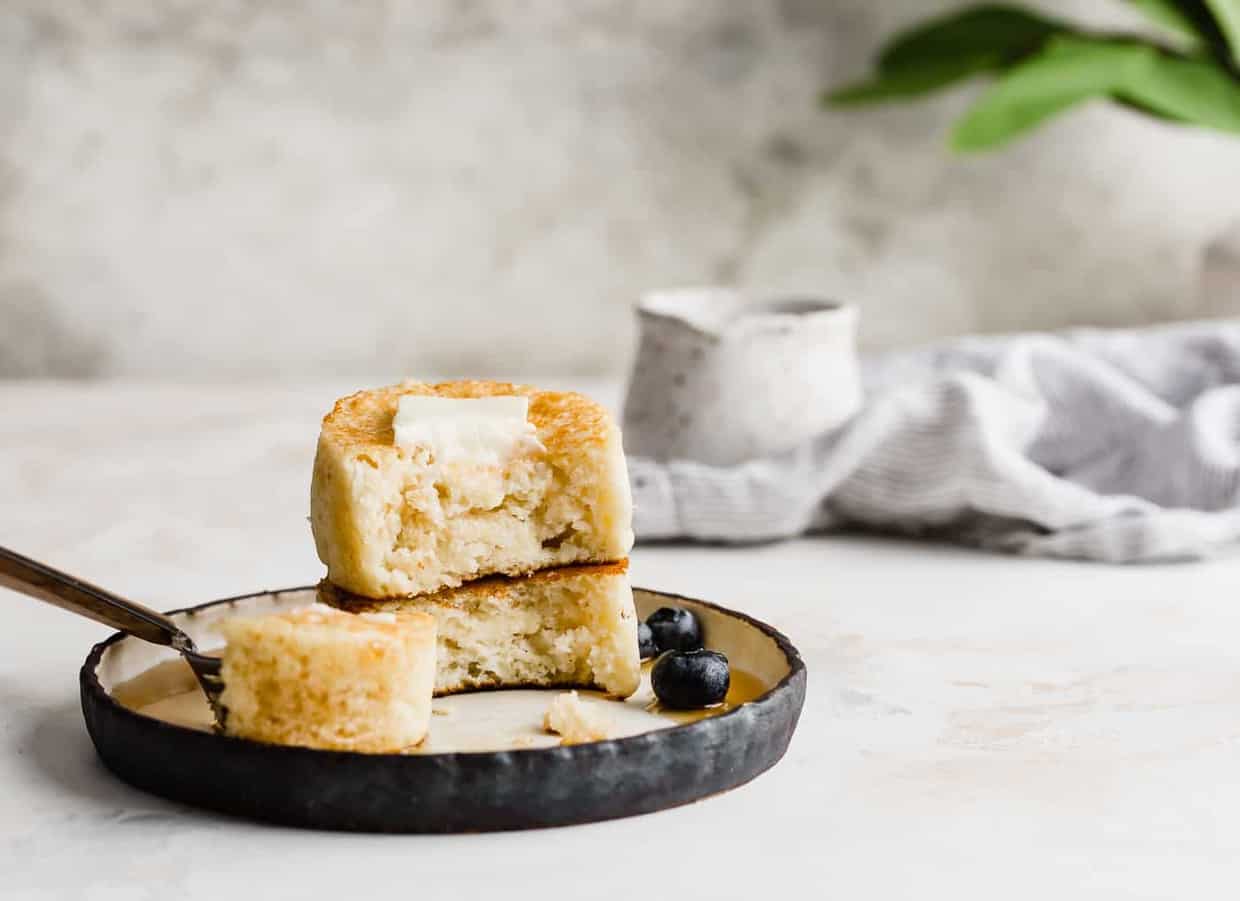
Recipe Tips
Making Japanese Pancake Batter
The key to the classic tall, fluffy Japanese pancakes is the eggs. When beating the egg whites, make sure you don’t over mix or under mix. This will affect how your pancakes cook and rise.
You know the eggs whites have been over mixed when the mixture breaks easily. Eggs whites are under mixed when they can’t hold a peak.
For perfectly mixed egg whites, when you pull the mixer away, the egg whites should form stiff peaks that hold their shape, that are straight up, but the very tip tip of the peaks will fold over like a little curl. Getting the egg whites right will give the correct air pockets to create fluffy pancakes.
Be careful not to over mix the batter as this will result in tough and chewy pancakes.
Preheating Your Pan
It’s important to preheat the pan on low to make sure the entire pan is the same temperature, with no cool or hot spots. It’s better to let the pan preheat on the lowest heat possible for a longer time than a higher temperature for a short time.
Filling the Molds
Spoon fill the pancake batter into the molds. This is important since you want to facilitate vertical growth for the tall pancakes. Put one spoonful on top of the other to help give that height.
DO NOT OVERFILL. The batter should fill the mold halfway up.
Cooking Japanese Fluffy Pancakes
Slow and steady wins the race to cook these Japanese soufflé pancakes. Japanese pancakes take longer to cook than regular pancakes. Cooking low and slow will help cook the entire inside of the pancake.
If you cook them on higher heat for a shorter time, the outside will look done but the inside will be raw.
Cook the Japanese souffle pancakes in a skillet or electric griddle with a lid to keep the temperature consistent inside for more even cooking.
If you add a little water in the skillet, the steam will help a bit with cooking, too.
Before flipping the souffle pancakes, the batter should have risen towards the top of the mold, there will be bubbles on the surface, and there will be a slight jiggle in the batter/pancake if you wiggle the mold slightly.
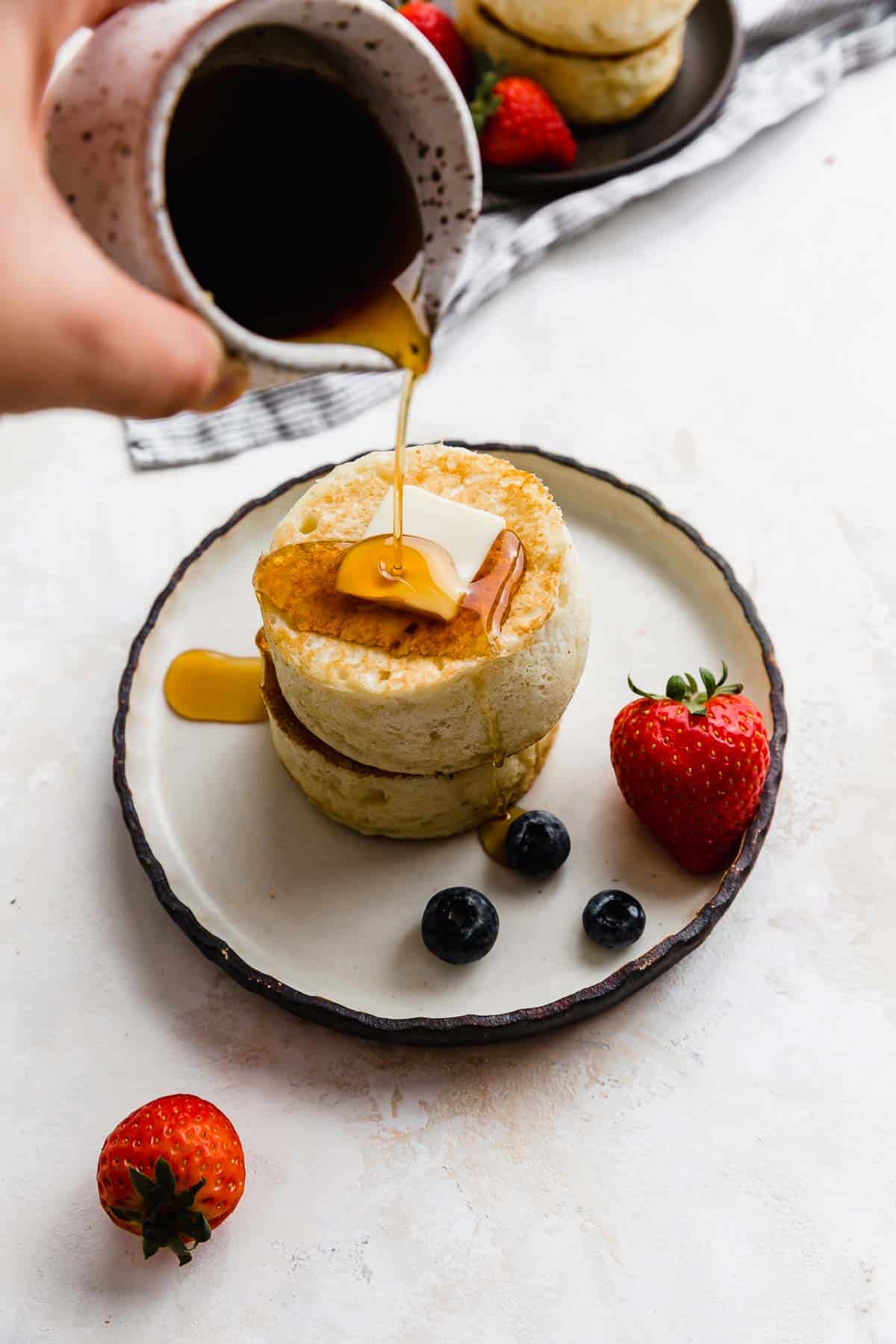
How to Flip Japanese Pancakes
If cooking 1 at a time, you can rest the pancake on the spatula and bring the skillet up to the pancake and turn the pancake onto the skillet.
If you flip too soon, the uncooked batter will ooze out into the pan.
Removing Japanese Pancakes from the Molds
The best way to get the pancakes out of the molds is by running a butter knife around the inside of each mold to release each pancake, then carefully remove the mold.
Eating Japanese Pancakes
You’re probably wondering why you need a tip on eating pancakes haha!
Just note that Japanese fluffy pancakes aren’t fluffy forever. They can deflate with time so eat within 30 minutes of cooking them.
However, the pancakes shouldn’t deflate right after cooking or even within a few minutes of them sitting on a plate. If your Japanese pancakes are deflating too soon, be sure to see my tips on preparing the batter and cooking the pancakes correctly.
Make Ahead, Storing, and Freezing
You want to eat these pancakes warm off the pan, so I don’t recommend making them ahead of time — not even the batter as the egg whites can deflate within the batter if sitting for too long.
Store any leftover soufflé pancakes in a ziplock bag or airtight container in the fridge for 2-3 days.
To freeze, you can store them in a freezer safe bag in the freezer for up to 1 month. Remove and let thaw in the fridge. Frozen and thawed soufflé pancakes will loose height.
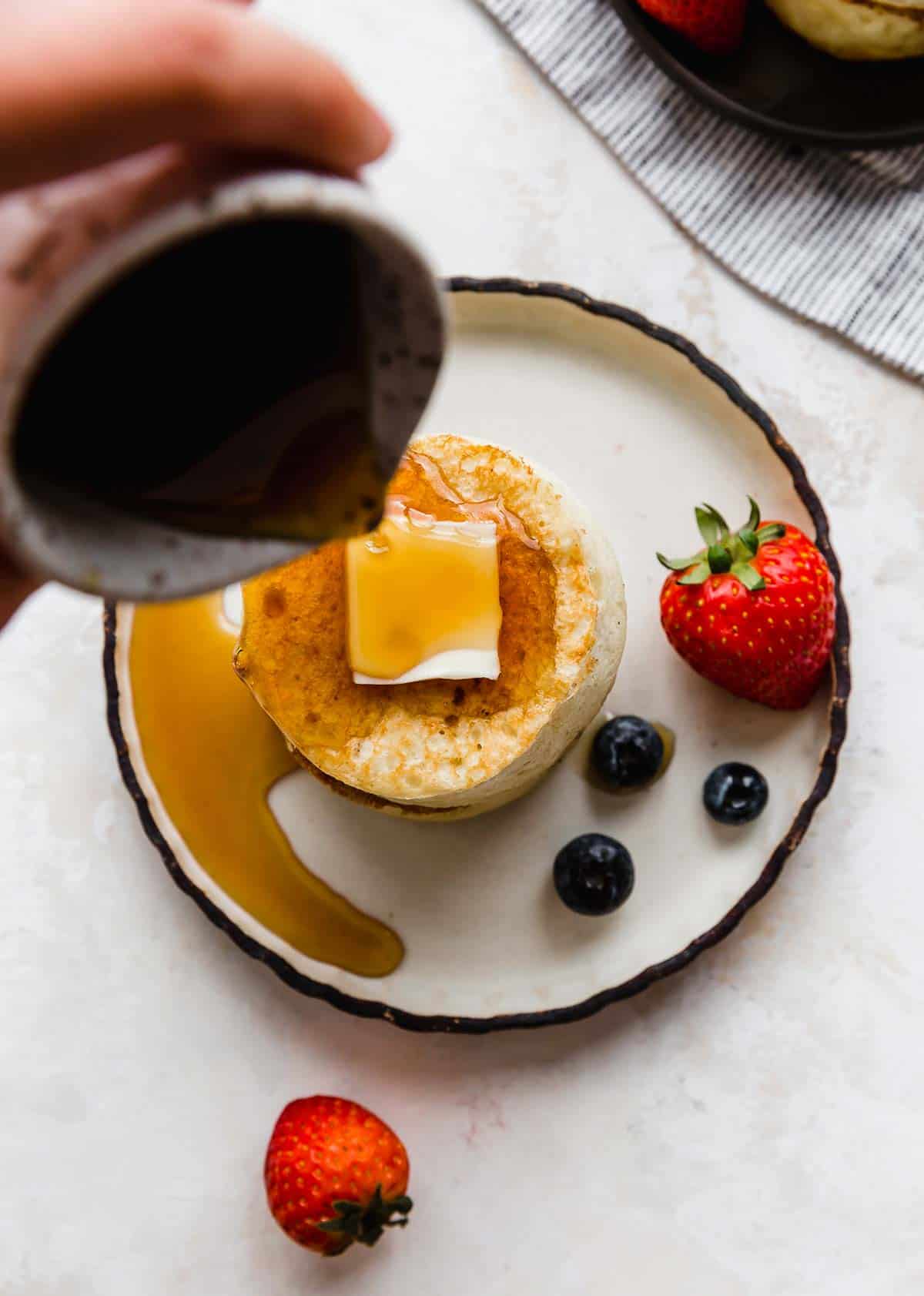
Recipe FAQs
Japanese pancakes are soufflé pancakes that are fluffy, soft and billowy. Like normal pancakes, you can eat Japanese pancakes with fruit, cream, syrup, chocolate chips and more.
Japanese soufflé pancakes should hold their tall shape for about 15-25 minutes. If they aren’t, there are a few things that could have affected that. 1) You over mixed or under mixed your egg whites. The egg whites give lift and air to the batter. Without perfectly stiff peaks, the batter won’t hold its shape when it’s cooked. 2) The pancakes weren’t cooked correctly. Remember, low and slow. If your pancakes are deflating but your egg whites were perfectly stiff, but not over mixed, then you could have been cooking the pancakes on too high of heat. If your heat was too high, then the pancakes would look done on the outside but not done on the inside. If the Japanese pancakes aren’t cooked well enough on the inside, the structure won’t be strong enough to keep the tall, fluffy shape.
As mentioned above, Japanese pancakes stay fluffy when your egg whites are mixed perfectly and the heat on the pan is preheated completely (to avoid hot spots) and the pancakes are cooked LOW and SLOW. But remember, it is normal for Japanese pancakes to deflate after they’ve been sitting for 30-45 minutes. However, it isn’t normal for Japanese pancakes to deflate within the first 25 minutes after cooking.
They have a similar flavor to a traditional pancake (they use very similar ingredients). They are buttery, flavorful, light and very fluffy!
Yes. You can freeze them in a zip top bag or airtight container for up to a month. However, these pancakes are better enjoyed fresh! If you freeze them, they won’t retain as fluffy of a shape as they are when eaten fresh.
Yes. However, these pancakes are much better when you eat them hot off the pan! If you have leftover pancakes, you can store them in an airtight container in the fridge and reheat them. However, the pancakes will deflate a little.
Fresh berries, bananas, syrup, whipped cream, nuts, coconut shavings, chocolate chips, and more!
Carefully release the bottom of the pancakes by using a spatula, sliding it under the pancake. Grasp the sides of the ring molds with kitchen tongs then carefully flip. (If cooking 1 at a time, you can rest the pancake on the spatula and bring the skillet up to the pancake and turn the pancake onto the skillet). NOTE: I have a short video of how to do this that you can find in this soufflé pancake recipe post above.
You will need the molds to make these pancakes. However, if you don’t have molds. I suggest making forms out of aluminum foil. Roll a sheet of aluminum foil in the same dimensions (3-inch by 2.5-inch). Then form that strip into a circle and staple together. The molds won’t be as firm as metal molds, but the aluminum foil will at least help the batter keep a somewhat circular shape. Without any form of mold, the Japanese pancakes will have a hard time cooking in a vertical shape.
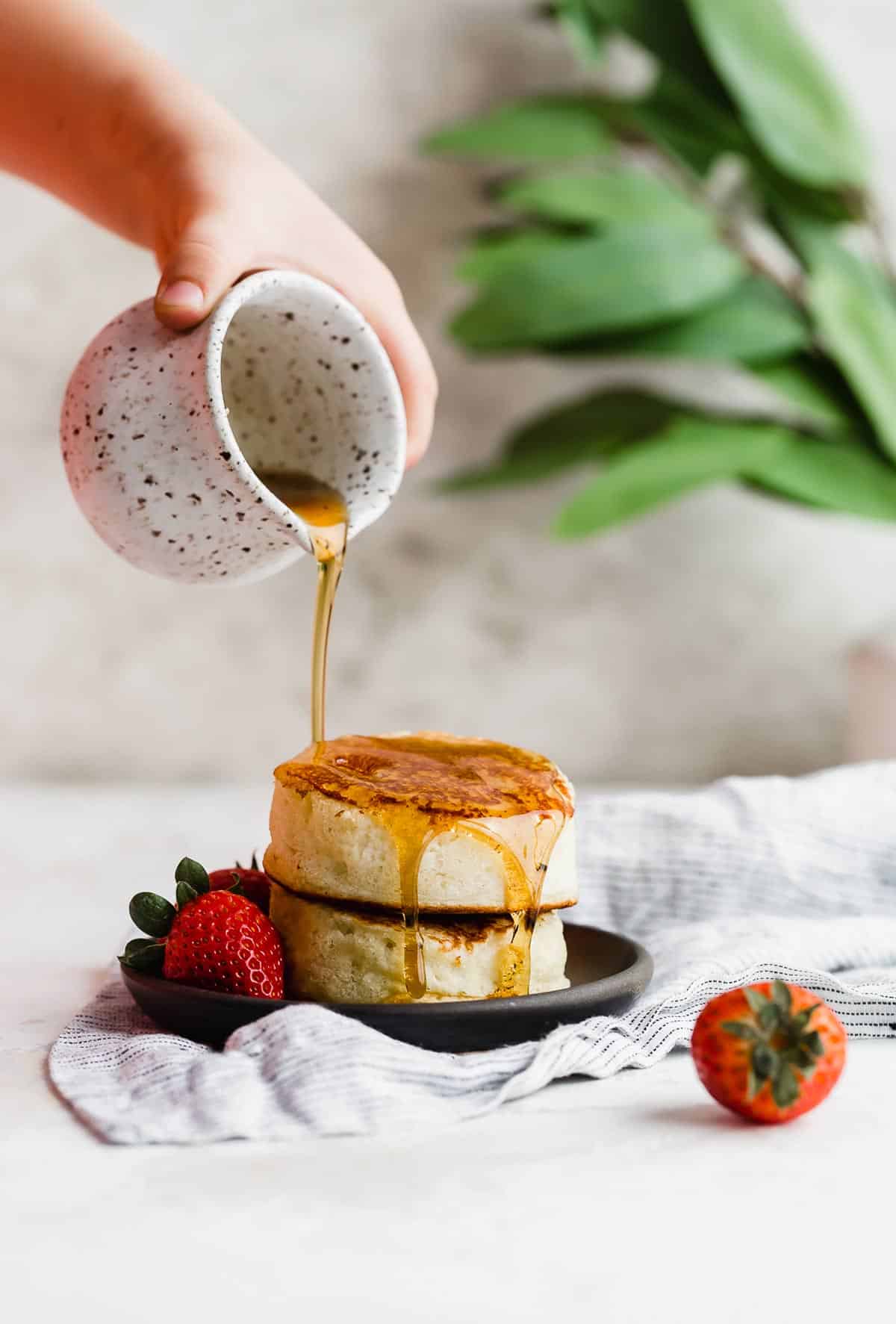
More Waffle and Pancake Recipes
Japanese Fluffy Pancakes
Ingredients
- 1 1/2 cups all purpose flour
- 3 tablespoons granulated sugar
- 2 teaspoons baking powder
- 1/4 teaspoon baking soda
- 3/4 teaspoon kosher salt
- 1 1/4 cups buttermilk - at room temperature
- 4 tablespoon butter - melted
- 1 teaspoon vanilla extract
- 2 egg yolks
- 4 egg whites
- 1/4 teaspoon cream of tartar
- cooking spray
Instructions
- You will need 3” x 2.5” wide ring molds, I linked to ones I use above.
- In a large bowl whisk the flour, sugar, baking powder, baking soda and salt.
- In a medium bowl whisk the buttermilk, butter, vanilla, and egg yolk until combined.
- In a medium bowl beat the egg whites and cream of tartar on medium-high speed until stiff peaks form. About 2-3 minutes.
- Using a rubber spatula stir the buttermilk mixture into the flour mixture until partially combined. Stir the egg whites into the batter until combined. Be careful not to overmix as this will result in tough and chewy pancakes.
- Heat a large nonstick skillet over medium-low heat. Spray the pan (or cooking surface) with nonstick spray. Spray the inside of a 3”in ring mold generously with nonstick cooking spray.
- Spoon in the batter. Place the ring mold on the warm pan and fill each mold with ½ cup of batter. DO NOT OVERFILL. The batter should fill the mold halfway to the top. Cover the skillet with a lid (if it has a lid) and cook until the batter rises to the top and the bottom of the pancake is golden, about 5-8 minutes. There should be some bubbles that have formed on the tops of the pancakes. The center will just barely jiggle. (Note: if you flip too soon, the uncooked batter will ooze out into the pan).
- Using a spatula, carefully release the bottom of the pancakes. Grasp the sides of the ring molds with kitchen tongs then carefully flip. (If cooking 1 at a time you can rest the pancake on the spatula and bring the skillet up to the pancake and turn the pancake onto the skillet). NOTE: I have a short video of how to do this. Cover and cook the other side for another 3-5 minutes.
- Release the pancakes. Transfer to a plate and remove the mold. Best way to get the pancakes out is by running a butter knife around the inside of each mold to release each pancake, then carefully remove the mold. Wipe down each mold and coat with cooking spray before repeating the process with the remaning batter.
- Serve warm with a sprinkling of powdered sugar and fruit, or butter and maple syrup. Pancakes can deflate with time.


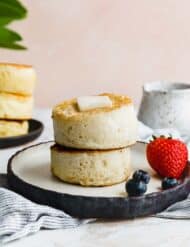
 Welcome to this delicious corner of the internet! Here I share the recipes my family loves.
Welcome to this delicious corner of the internet! Here I share the recipes my family loves.
